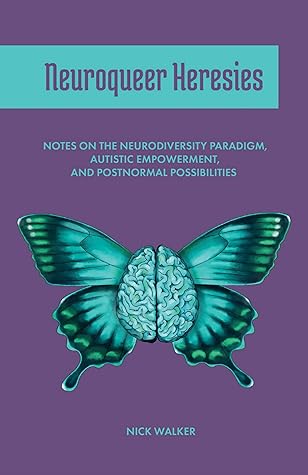More on this book
Community
Kindle Notes & Highlights
by
Nick Walker
The master’s tools will never dismantle the master’s house. To work within a system, to play by its rules, inevitably reinforces that system, whether or not that’s what you intend.
the understanding of neurological variation as a natural form of human diversity, subject to the same societal dynamics as other forms of diversity—is
Disordered compared to what state of order, exactly, if we refuse to buy into the idea that there’s one particular “normal” order to which all minds should conform?
psychedelic
and people who have altered their own neurocognitive functioning through extensive use of psychedelic drugs.
social model of disability emerged within the disability rights movement and remains a cornerstone of disability rights activism, as well as being a foundational concept in the field of Disability Studies.
Remi Yergeau, Kassiane Asasumasu, Amy Sequenzia, and myself. Read Yergeau’s book Authoring Autism and their article “Clinically Significant Disturbance.” Read Finn V. Gratton’s Supporting Transgender Autistic Youth and Adults. Read Michael Scott Monje’s Defiant. Read neuroqueer speculative fiction by autistic authors like Dora M. Raymaker and Ada Hoffmann.
The freedom to be autistic necessarily includes the freedom to give bodily expression to one’s neurodivergence.
“The classroom remains the most radical space of possibility in the academy.” —bell hooks
The praxis generated by this shoddy discourse and theory consistently makes life worse for autistic persons and their families; the situation is so bad that harm, degradation, and trauma suffered at the hands of therapists, educators, and other professionals has become one of the most consistent and pervasive themes in the writings of autistics.
Neuroqueer transcends essentialist identity politics not only by treating identity as fluid and customizable, but also by being radically inclusive.
my central priority is the cultivation of human potentials for creativity, well-being, and beautiful weirdness—and our capacity to bring such potentials to realization ultimately depends not on our choice of identity labels but on our choice of practices.
Neurotypical people aren’t people who all share one distinct type of human brain, they’re people whose compliance with prevailing cultural standards of neuronormative performance gains them the privileges that come with being considered “normal” within the dominant culture.
Neuroqueering on an individual level, in the form of creative bodily enactments that subvert the norms of normative performance and disrupt internalized habits of normative embodiment, serves to materialize previously unrealized neurocognitive and creative potentials.
With this awakening of new neuroqueer creative capacities comes an increased capacity to participate in the neuroqueering of cultural spaces and cultural practices: the ongoing co-creation of social environments that support the creative participation of neuroqueer bodyminds and encourage further embodied exploration of neuroqueer performance and neuroqueer possibilities. This sort of ongoing interplay between the neuroqueering of individual bodyminds and the neuroqueering of cultural spaces is the key to collective liberation from compulsory normativity.
Neuronormativity and heteronormativity, in essence, are systems of artificial restri...
This highlight has been truncated due to consecutive passage length restrictions.


